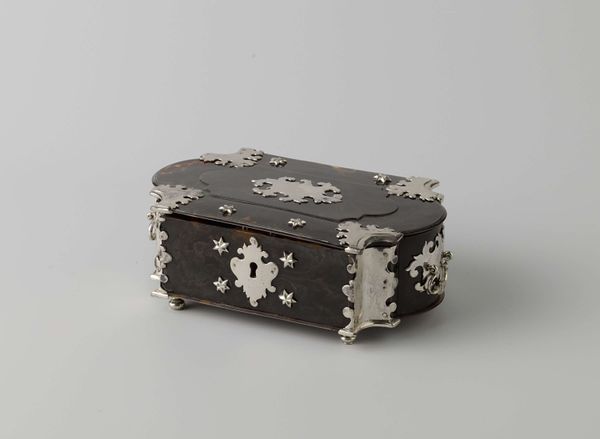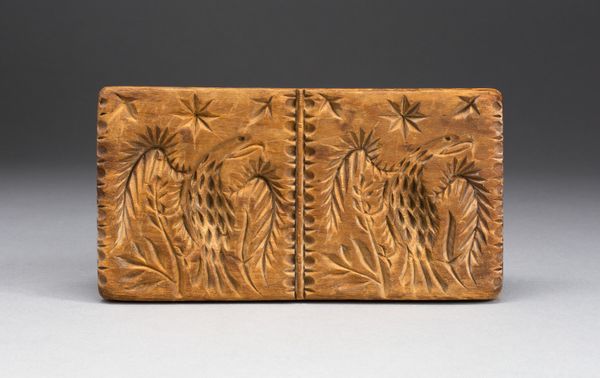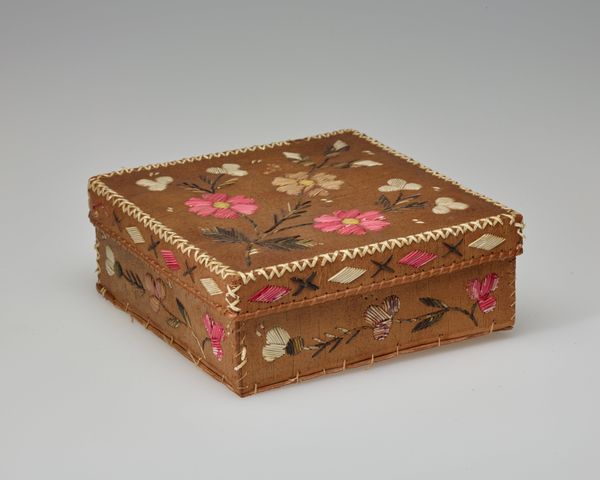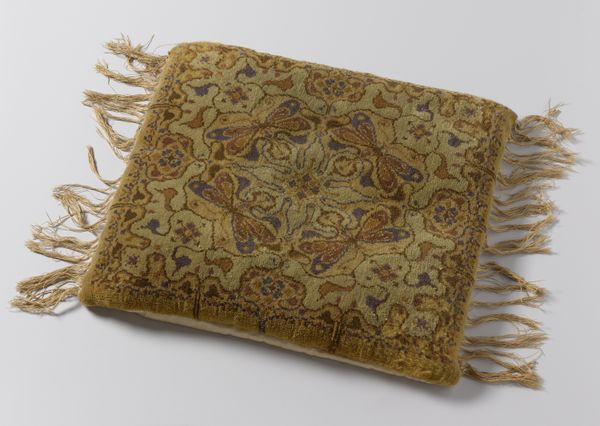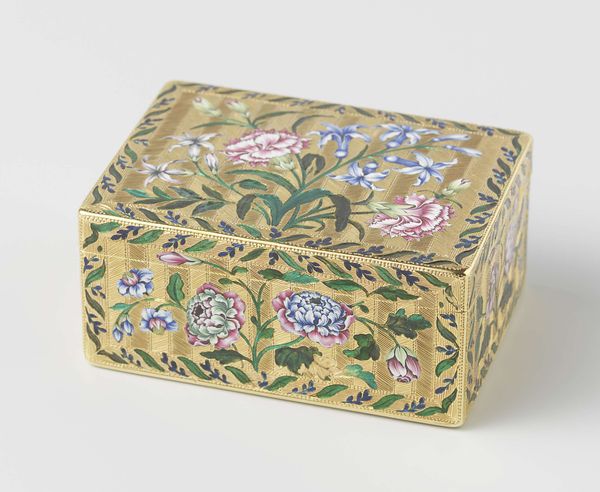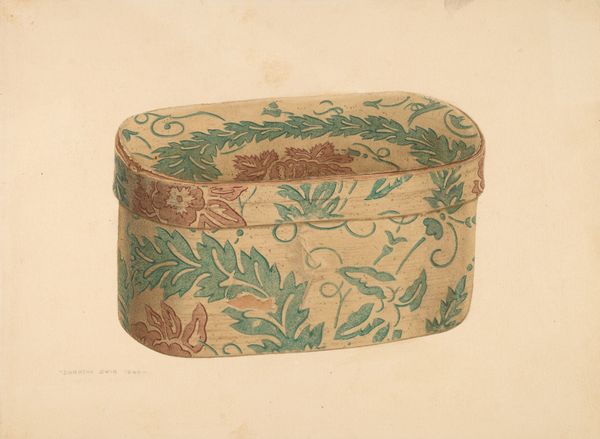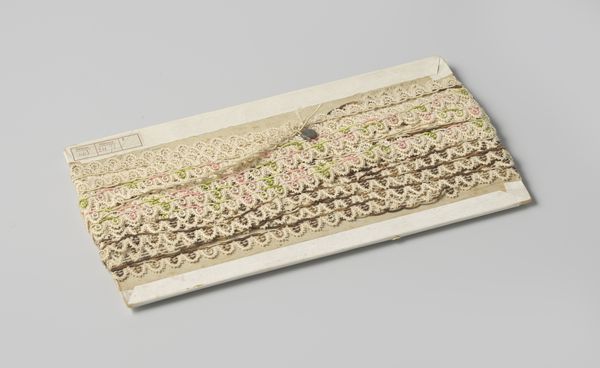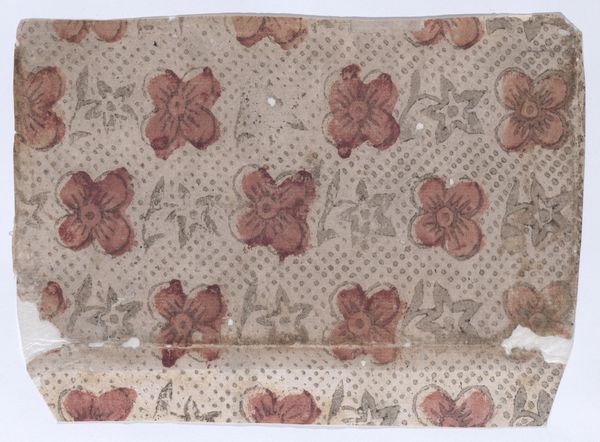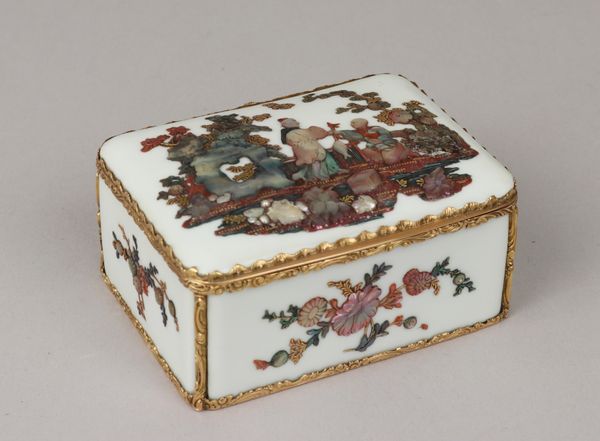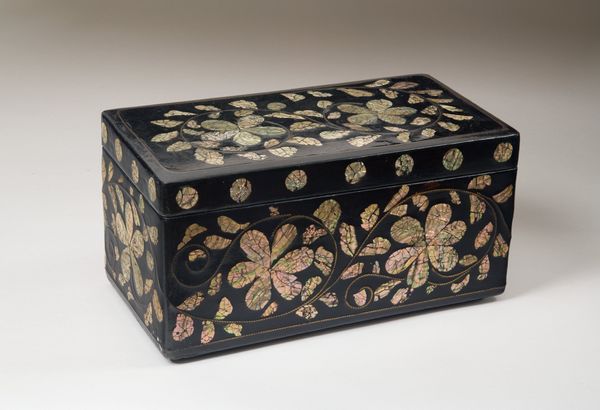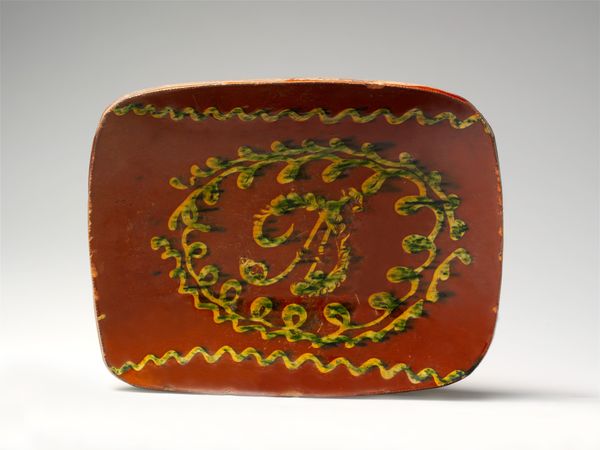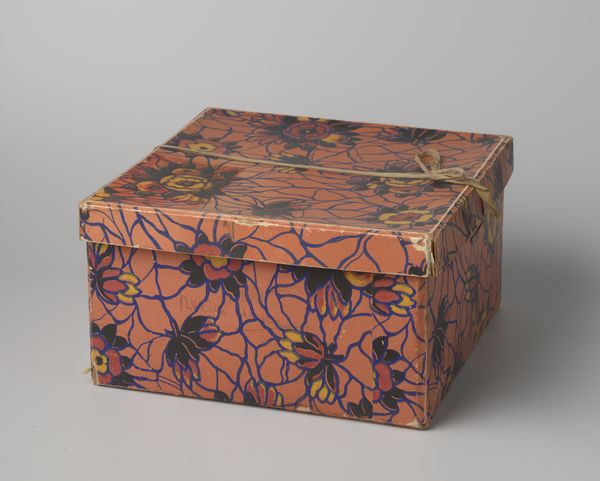
#
folk-art
#
decorative-art
#
indigenous-americas
Dimensions: 2 1/4 × 4 7/16 × 3 1/4 in. (5.72 × 11.27 × 8.26 cm)
Copyright: No Known Copyright
Editor: Here we have a "Covered Quillwork Box," an Anishinaabe piece, likely from the 20th century. The box itself seems to be wood covered in textile and fiber art, and I'm immediately struck by its folksy charm, this beautiful floral design in such precise detail. How would you interpret a piece like this? Curator: Well, imagine the hands that made it, each quill meticulously placed. This box whispers of skill, patience, and a deep connection to nature, don’t you think? The Anishinaabe, like many Indigenous groups, have long honored the natural world through their art. This box isn't just decorative; it's a story told in birch bark and quills. Editor: A story, how so? Curator: Look at the floral motif. Flowers often represent beauty, but also resilience. Think of how a flower pushes through the earth towards the sunlight; it is life finding a way. Perhaps it's about honoring the gifts of the earth. It’s folk art as personal expression. Does the limited palette tell us something, perhaps using the immediately available natural resources? What would they keep inside it, I wonder? Something valuable? Editor: I didn't think about the potential symbolic meanings behind the flowers, so it's cool to look beyond just aesthetics. And, I was so focused on the box, I hadn't thought much about who might have created it. Curator: Art becomes truly powerful, don’t you agree, when you start seeing the spirit in it? Editor: I completely agree! Thinking of it as a deeply personal story woven with intention completely changes the way I appreciate the craft.
Comments
minneapolisinstituteofart almost 2 years ago
⋮
The Anishinaabe woman artist who created this intricately adorned and finely woven basket utilized locally harvested porcupine quills, birchbark, and sweetgrass. Artists often incorporated abstraction into their work, layering quills in complex patterns and forms that reveal both technical mastery and artistic ingenuity. For more than two hundred years, Anishinaabe women sold many of their birchbark containers and baskets to non-Native people to sustain their families during a time of major cultural disruption, including forced assimilation and removal onto governmental and religious controlled reservations. Quillboxes exemplify the power of Anishinaabe women to create a new and unique artform that expresses cultural and individual resiliency and creativity.
Join the conversation
Join millions of artists and users on Artera today and experience the ultimate creative platform.
